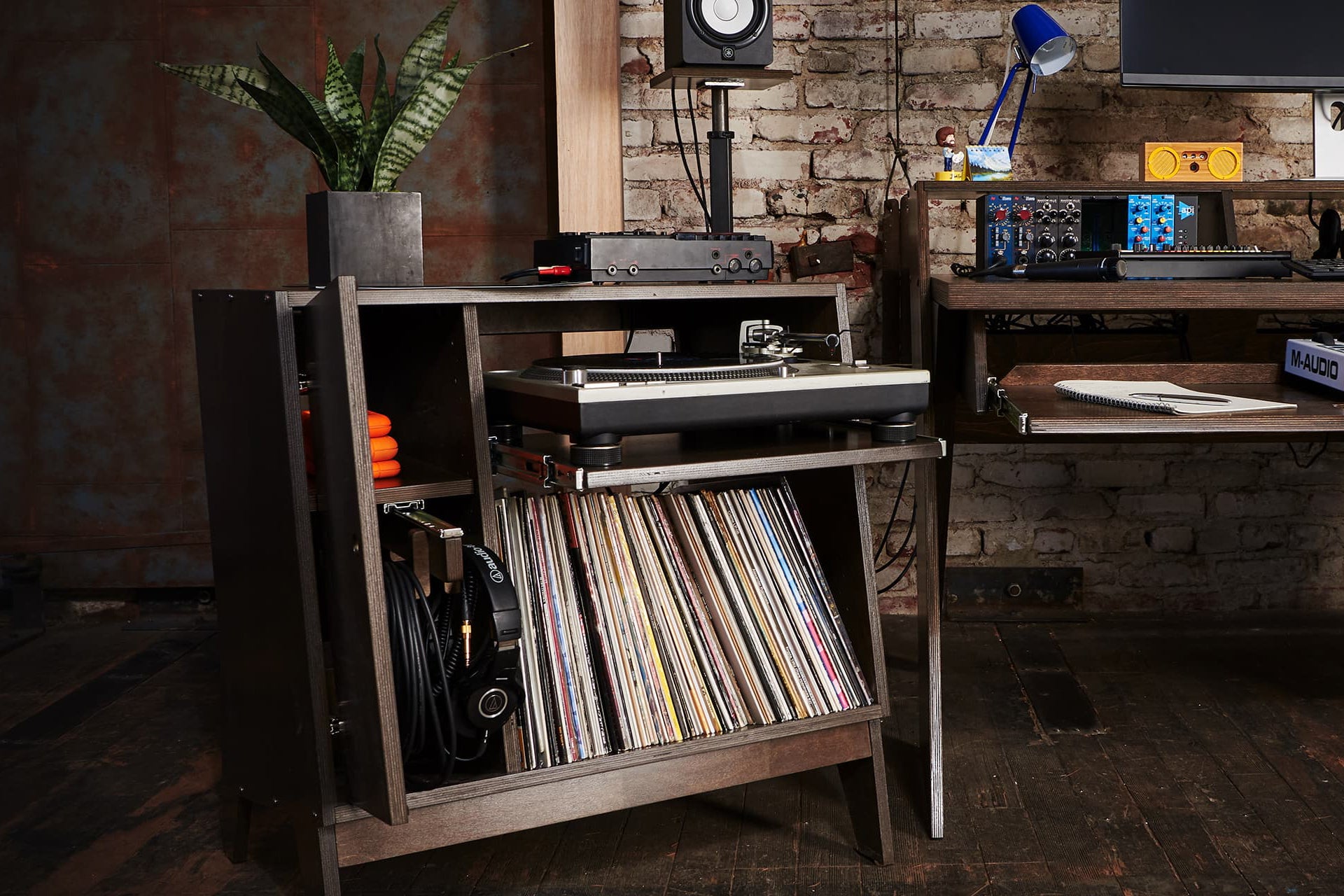Where you should install the panels is determined by your listening position. Your listening position is the “sweet spot,” the place your ears will be most of the time when you’re listening or mixing.
In general, arrange your room in a way that makes the most sense for your room to be a useable space. Try to make sure that your speakers are a foot away from the wall behind them, and that the main left and right speaker arrangement is centered on that wall, not in a corner. The walls to the left and right of your listening position should ideally be made from the same material. Try to avoid having any windows on either of those walls, because you can’t mount treatment to windows, and they’ll reflect higher frequencies more intensely than other materials, throwing your stage off balance.
Early reflections are the first reflections you hear from the walls, ceiling and desk between you and your studio monitors. Early reflections smear the clarity of your soundstage. If you can see either of your speakers in the reflection of a window when you’re at your listening position, it may be worth moving everything around. Ideally, the wall directly behind you should also be one you can hang treatment on.
Absorbers
The Eco Absorbers mostly absorb mid to higher frequencies, which are more directional than lower frequencies. Absorbers tame early reflections, flutter echo and the general hollow-sounding nature of rooms. These will clean up the sound stage, and focus the airiness of recordings.
The goal is to hear the speakers, and not early reflections from the walls on either side, or the ceiling above.
One easy trick is to get a mirror and put it where you think sound will bounce to your listening position. If you sit in your listening position, and see your monitors in the mirror, that’s where an absorber should go.
Once you have those problem early reflective areas taken care of, you can proceed with outfitting the rest of your studio. If you have a single Absorber pack of four columns, use two of the columns to take care of the early reflections to your left and right, then place the other two on the back wall, equidistant from each other and the corners, to knock down flutter echo.
In general, you don’t want any two parallel walls to be totally untreated. This placement will put treatment on three walls, which will do that job.
Bass Traps
Non-directional low frequencies tend to resonate in corners. This bass build-up is problematic and results in muddy sound, so we need to remove it. This is done by catching the bass with Bass Traps, mounted in the corners.
De-Fi Bass Traps are open and multilayered. They absorb higher frequencies, much like absorbers, and trap frequencies behind, but the special sauce is in the sympathetic acoustic mass suspended between the corner and the Eco Panels. This limply suspended panel of heavy mass loaded vinyl absorbs lower frequencies in the corners, by sympathetically vibrating with the energy.
Diffusers
A proper diffuser will give the listener sitting at the sweet spot the illusion of being in a much bigger room. Think of them like virtual open windows behind, that let out certain frequencies.
However, not all diffusers are created equally. Simple shapes can be acoustically unpredictable. The De-Fi Diffuser is tuned to bounce the frequencies of 850Hz to 3400Hz, which is pretty close to G5 through A7 on a keyboard. This is a range that tends to ring in small to average sized rooms, and is a very unpleasant range to have resonating.
For best results, mount the diffuser on the wall directly behind the listening position.
They also work well mounted on the front wall directly behind your studio monitors, helping to open up their sound.
Conclusions
To summarize, Absorbers will flank your listening position, and go behind as well as above.
Bass Traps go in the corners.
The Diffuser will go directly behind the mix position on the back wall, and if you want to spend more, behind your studio monitors on the front wall.
The article explaining how many panels you need linked here includes diagrams that shows the general principles of placement.



